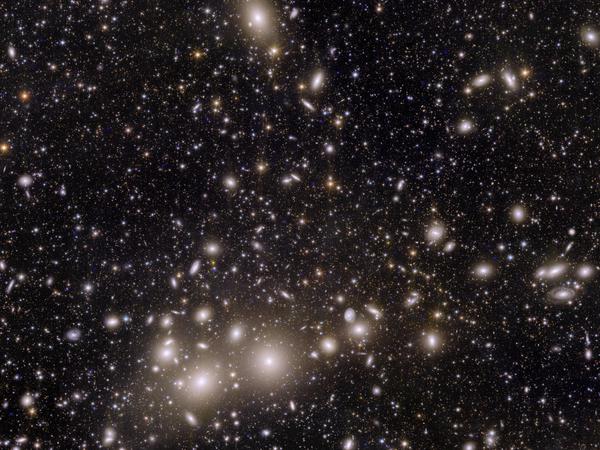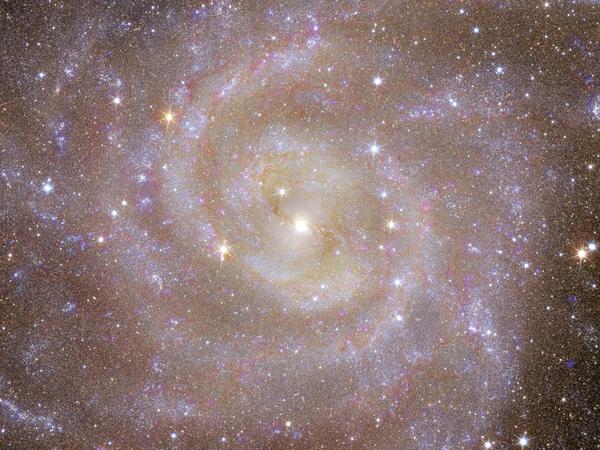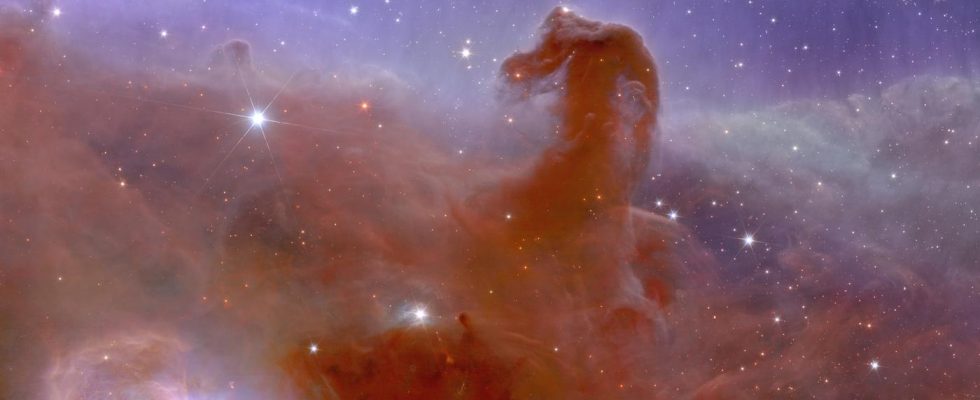There are plenty of impressive pictures of the starry sky. The Hubble space telescope alone has filled a huge database, and its successor, Webb, provides even more. Can more pictures still arouse enthusiasm? Yes, at least that’s what the European space agency Esa says. Today she presented the first color images from her “Euclid” telescope, which was launched into space at the beginning of July.
“Never before has a telescope been able to take such razor-sharp images over such a large portion of the sky and see so far into the distance,” it said in a statement. The five images released showed the observatory’s potential. “The telescope is poised to create the most comprehensive 3-D map of the universe to date and uncover some of its hidden secrets.”
There are more hymns to Euclid and his images that are “more beautiful and sharper than we could hope,” as project scientist René Laureijs puts it. The relief is understandable, after all, a lot can go wrong on the way from a mission idea to a well-functioning research device. Because of the war-related sanctions, among other things, it had to be switched from a Russian launch vehicle to one from SpaceX. On the way to the observation site 1.5 million kilometers away, all devices cooled down to minus 180 degrees, but were not allowed to lose any of their precision.
The telescope is poised to create the most comprehensive 3-D map of the universe to date and uncover some of its hidden secrets.
The European Space Agency Esa on “Euclid”
That apparently succeeded. For example, there is a photo of the Perseus cluster, which consists of around 1000 galaxies. In addition – assuming you have a corresponding screen – more than 100,000 galaxies can be seen in the background. Many of them have not been seen before. Some are so far away that their light took ten billion years before it reached Euclid’s detectors.

© IMAGE CREDIT: ESA/Euclid/Euclid Consortium/NASA, image processing by J.-C. Cuillandre (CEA Paris-Saclay), G. Anselmi; CC BY-SA 3.0 IGO
Or an image of the Horsehead Nebula, a star-forming region in Orion, which was also imaged by other telescopes. In the new image, the Euclid scientists hope to discover more baby stars and faint Jupiter-sized exoplanets.
The goal is to understand dark energy and dark matter
However, the main goal of the 1.4 billion euro mission is to learn more about dark matter and dark energy. They are auxiliary terms for something that researchers know little about. It’s clear: If the cosmos consisted solely of visible matter, it would not function as we see it. Galaxies would fly apart because the gravity of the visible matter is not enough to keep all the stars on course. There must be other “dark” matter that helps with its attraction.

© esa
According to the theory, their gravity also distorts images from long distances, like a lens.
The Euclid researchers will use data analysis to look at the shape of tens of galaxies and look for distortions. Since the telescope also measures very old objects and thus looks back in time, it should provide a distribution of dark matter in our universe.

© esa
The map of the distribution of galaxies over cosmic time should also reveal something about dark energy. According to popular belief, this supports the accelerated expansion of the universe.
Researchers can use the measurement data to test and improve models of dark matter and dark energy.
Euclid is currently undergoing a final fine-tuning; scientific operations are scheduled to begin at the beginning of 2024 and extend over six years.

